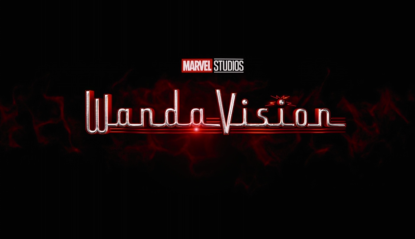Wandavision breaks new barriers
March 19, 2021
A laugh erupts from her smiling face, all the while a tear slowly runs down her cheek. “Stop it, stop it, stop it, stop it.” The cheery music stops. The whole time you’ve been watching, the only colors you’ve observed are black and white, yet now, it seems darker than usual. The once cheery 50’s sitcom, filled with studio laughter and cheesy jokes, is now replaced with silence, and a man lying dead on the floor. You see color for the first time: her brazen, red eyes. You would have never guessed that this would be a Marvel show.
On January 15, 2021, Disney+ had released the first episode of the newest addition to Marvel’s phase four: WandaVision. Directed by Matt Shakman, WandaVision takes place directly after Avengers: Endgame. WandaVision’s appeal derives from its original plot and change of pace for the MCU. Wandavision takes place in the town of Westview. Portrayed as a sitcom, each episode is centered around the various shenanigans of the couple. Surrounded by a shroud of mystery, however, the audience is forced to interpret the hidden meaning of each scene, each line of dialogue, as they are met with rather unexpected plotlines: cooking a meal for your boss at work, raising a new puppy, and the trials of committing to the neighborhood watch.
Make no mistake, there is a reason everyone is talking about WandaVision. From what I witnessed, the most prevalent of these reasons is the change of pace offered throughout each episode, separating itself from the drawn-out action movie formula that MCU fans were spoon-fed for 11 years. Quick camera-cut fight scenes have turned into eerie scenes of suspense. The usual dry-wit banter from superheroes has been replaced with genuine terror and tears stemming from each character, as they try to escape the reality Wanda trapped them in. Even the genre of the MCU – a template for comedy/action – has been replaced with a pure original mix of sitcom comedy and horror. After 22 movies of superheroes spewing out the same dry-wit banter fresh out of a fast-cut action scene, the sight of Wanda turning away in tears at the sight of Vision’s decaying corpse asking her “is something the matter” offered me a sense of genuine fear and a jaw-dropped expression – an emotion that no MCU product has given me before. These terrifying scenes offer the audience a breath of fresh air that hasn’t been inhaled for 11 years.
Of course, the writing has taken a positive effect outside of the plotline. Throughout each episode – whether it takes place in a 50’s sitcom or a government observatory – each character’s dialogue or hidden details on set serves as Easter eggs from previous Marvel movies or fuel for more fan-made theories. For example, in the introduction of his character – officer Jimmy Woo decides to have his ID appear in his palm with the flick of his wrist. This, to the appeal of the most devoted MCU fans, was a callback to his role in Ant-Man, where he asked Scott Lang to teach him this “magic” trick. Although this may be a relatively small detail, the addition of specific instances such as this helped build all characters within the Marvel Universe.
Despite various instances of inadequate acting (yes, I’m talking about Kat Dennings, who portrayed Darcy Lewis), these insignificant blotches are hardly noticeable on such a revolutionary show. Whether you are a diehard MCU fanatic or an average moviegoer, WandaVision is a perfect show to start; not just for phase four, but for the MCU as a whole.
